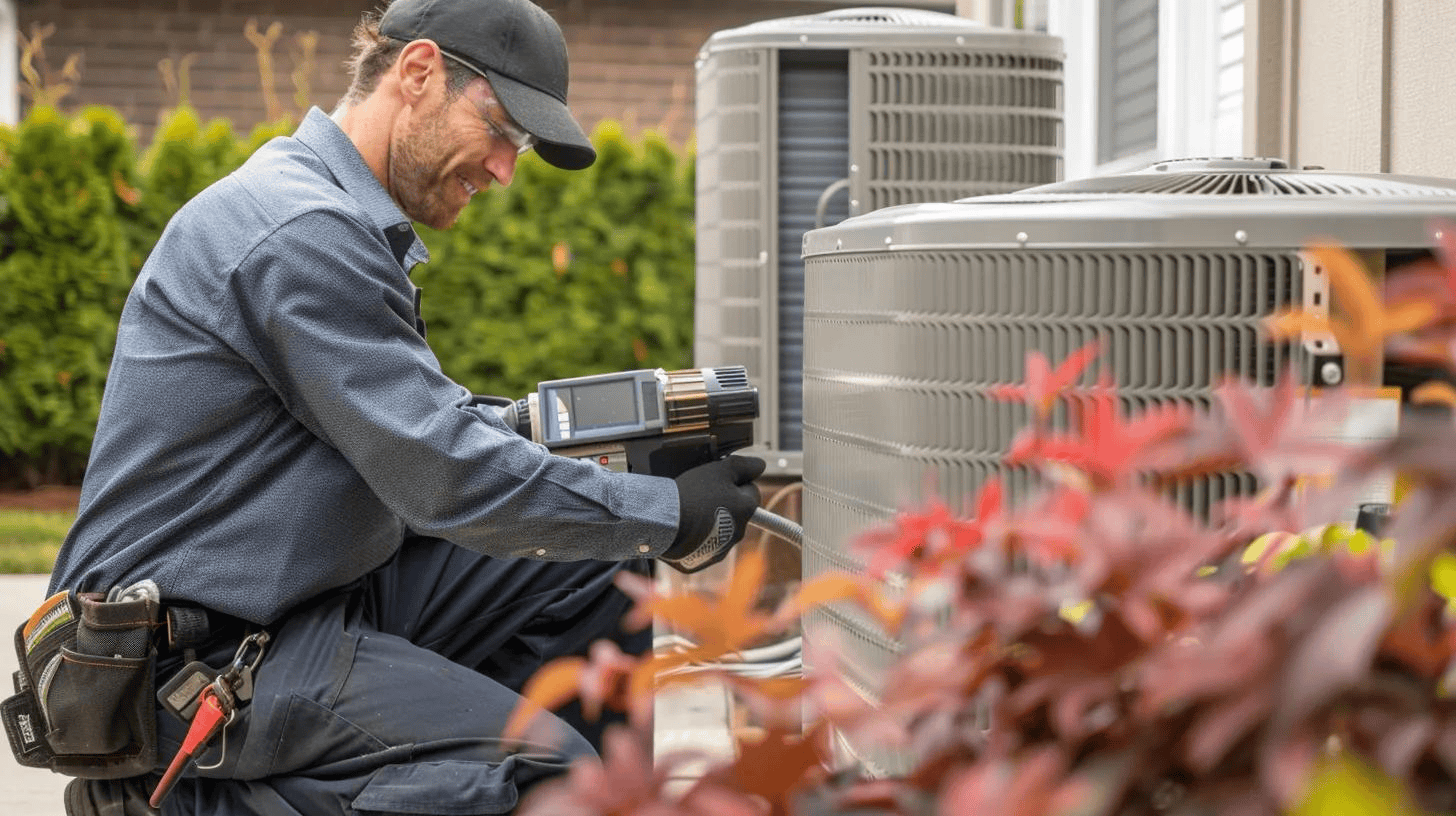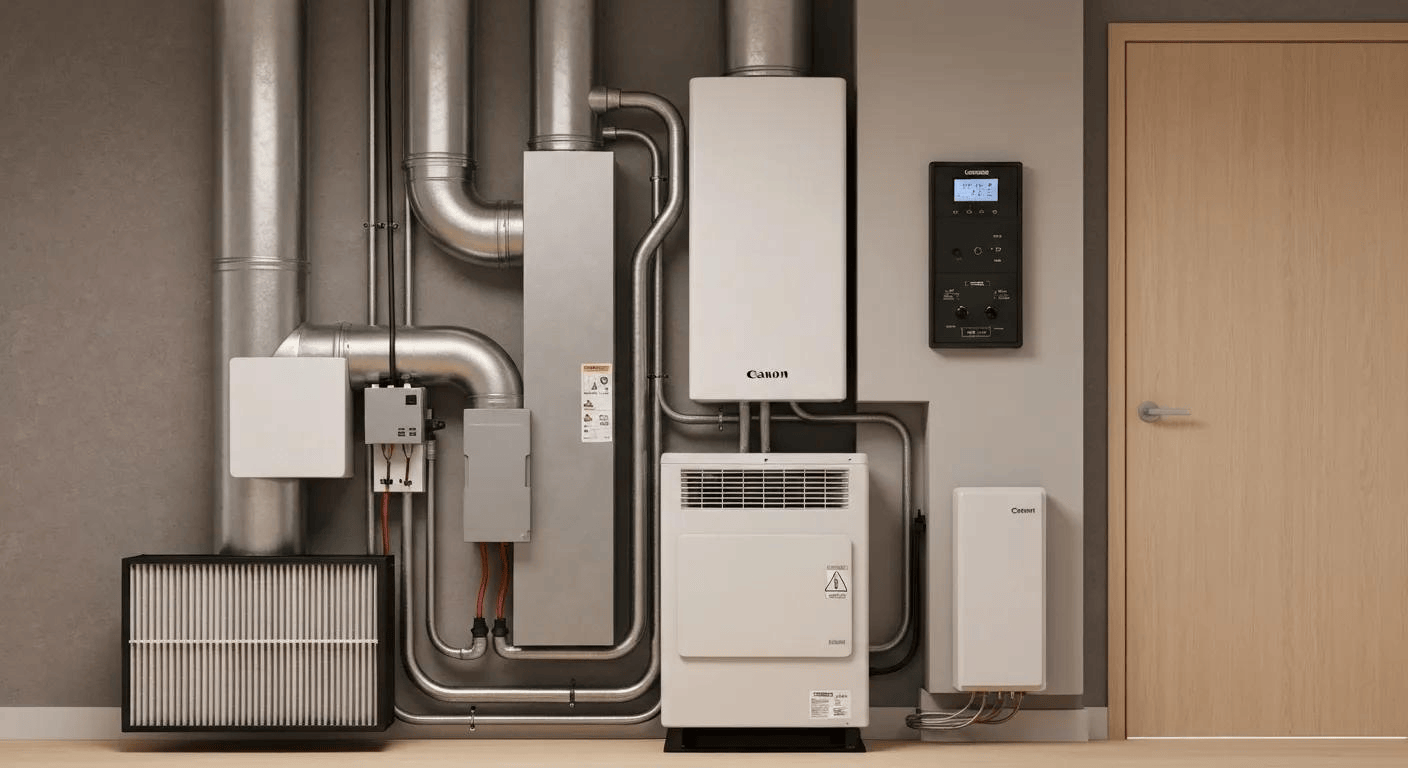When your heat pump flashes an error code, it is usually a sign that something is not working quite right. These codes are your system’s way of letting you know it needs attention. But without the right information, it can be confusing to know what to do next, especially when you're relying on your unit to keep your home comfortable during a hot Roanoke summer. While some issues might be minor, others can indicate a larger problem developing within your system.
Ignoring these alerts can cause more than just discomfort. Delaying repairs could lead to bigger issues, higher energy bills, or even complete system failure. Whether you're seeing an unfamiliar alert on your thermostat or your heat pump simply is not keeping things cool the way it used to, learning what certain codes mean can help you take the right next step faster.
Common Heat Pump Error Codes
Modern heat pumps are built to communicate problems directly to the user. When something goes wrong, the system gives you an error code that points to the issue. While the exact codes can vary depending on the unit model, Roanoke homeowners tend to encounter several common ones.
Here is a breakdown of frequent error codes and what they usually signal:
1. E1 – This code often points to a communication problem between the indoor and outdoor units. Without clean data passing between the two, your system might shut down or produce uneven temperatures.
2. F1 – Typically means a fault with the indoor sensor. If your system can’t read indoor temperatures, it may operate at the wrong settings or not run at all.
3. P4 – Signals an inverter compressor drive error. This is a performance-related issue and usually means the system is running inefficiently or not at all.
4. H3 – Suggests high compressor discharge temperature. The unit may be working too hard due to clogged filters or airflow issues.
5. E6 – Points to a fan motor failure, often in the indoor unit. This can drastically reduce airflow and cooling output.
Each of these codes affects system performance in different ways. Some can lower efficiency, while others may force the unit to stop running entirely. For example, if your Roanoke home’s heat pump shows an H3 error, poor airflow could be driving up internal pressure, leading to overheating. In that case, continuing to run the system might cause wear on critical components.
Recognizing these codes and understanding what they represent lets you better explain the situation when calling for help. It reduces guesswork, saves time in diagnosing the issue, and helps get your system back up and running sooner.
What Causes These Error Codes?
Error codes do not appear out of nowhere. They are triggered by specific conditions inside or outside the heat pump. While each code might seem technical, the core issues behind them can often be grouped into a few main causes.
Here are some of the most common reasons heat pump error codes pop up:
- Blocked or clogged air filters
- Disconnected or damaged wiring
- Thermostat sensor failure
- Low refrigerant levels
- Frozen coils
- Outdoor debris causing reduced airflow
- Power supply problems
- Faulty fan motors or compressor parts
Seasonal shifts in Roanoke can contribute to some of these problems. For instance, higher pollen counts in summer may clog filters faster. Heavy rain or windstorms might push leaves or debris into your outdoor unit. If left unresolved, these issues add up. Even something as simple as a loose wire can interrupt communication between components, which often triggers a system error.
Age and lack of maintenance also play a big part. A heat pump that has not been professionally inspected in over a year is more likely to experience buildup, sensor problems, faulty connections, and declining performance. Trying to handle these situations without the right tools or experience can worsen the problem and lead to higher repair costs.
The appearance of any error code should be treated as a sign your system needs attention. That does not always mean there is a crisis, but it does mean the system has picked up on something that could hurt performance if overlooked. Regular care and fast diagnosis help prevent breakdowns or costly disruptions.
Steps To Take When You See An Error Code
If an error code appears on your thermostat or indoor unit, the first step is not to panic. These codes are often early warnings, not signs of immediate failure. Acting quickly but calmly allows you to prevent bigger issues.
Start with a few basic steps before reaching out for professional help:
- Check your thermostat for any loose wiring or dead batteries
- Inspect your air filter and replace it if it is clogged or dirty
- Look around your outdoor unit for debris like leaves, branches, or trash
- Turn off the unit, wait five minutes, then turn it back on to see if the code clears
These quick actions can sometimes resolve minor issues or at least rule them out. For example, a dirty air filter can cause poor airflow, which may trigger a high discharge temperature error. If replacing the filter resolves the code, you have saved yourself time and discomfort.
That said, a code that sticks around or keeps popping up should not be ignored. Some problems, like refrigerant loss or inverter failures, can only be addressed with the right knowledge and tools. Trying to take those on without training could expose you to electrical risk or cause further damage.
At that point, contacting our technicians for heat pump repair in Roanoke is the best next step. When our professionals check your system, they do not just treat the visible symptom. They inspect related parts, test performance, and make sure the problem does not return. That kind of full evaluation helps keep each repair visit productive and focused on long-term function.
Benefits Of Regular Maintenance For Heat Pumps
Most major issues caused by heat pump error codes can be avoided with scheduled maintenance. Regular checkups allow our technicians to find and fix small concerns, such as weak sensors, low refrigerant levels, or early signs of corrosion, before they create system-wide failures.
A well-maintained system has a better chance of running without issues. Here is how routine care helps with that:
- Detects worn-out components before they fail
- Keeps filters clean and airflow steady
- Ensures correct refrigerant pressure
- Allows software updates or control checks to keep communication signals clear
- Verifies accurate thermostat function and temperature readings
Maintenance visits also provide peace of mind. When our professionals thoroughly inspect your equipment, you are less likely to be caught off guard during the hot Roanoke summer. From tightening loose connections to checking airflow around the outdoor unit, catching these issues early means your system can run more efficiently and stay error-free longer.
Keeping Your Roanoke Home Comfortable Year-Round
Heat pump error codes should not be ignored, but they do not have to be stressful either. Most codes are warnings, early signs that a part is behaving differently or a sensor is detecting a performance issue. With a little background knowledge and quick action, many of these situations can be managed before they affect your comfort.
For homeowners in Roanoke, dealing with heat pump trouble during summer can be frustrating. But no one should wait for a full breakdown. Regular maintenance, fast diagnosis, and support from trained professionals can limit unexpected repairs and keep your cooling system strong when it is needed most.
The more you understand what your system is telling you, the easier it becomes to restore comfort without delay. Error codes may seem like cryptic messages, but they are actually useful alerts that help identify problems early. When a skilled technician handles the repair, your home stays cool, steady, and reliable.
If recurring system alerts are affecting your comfort, turn to Woods Family Heating and Air for dependable heat pump repair in Roanoke. Our experienced technicians are ready to quickly identify and resolve issues so your HVAC system runs efficiently again. For a quick estimate or to book a service visit, please contact us today.








